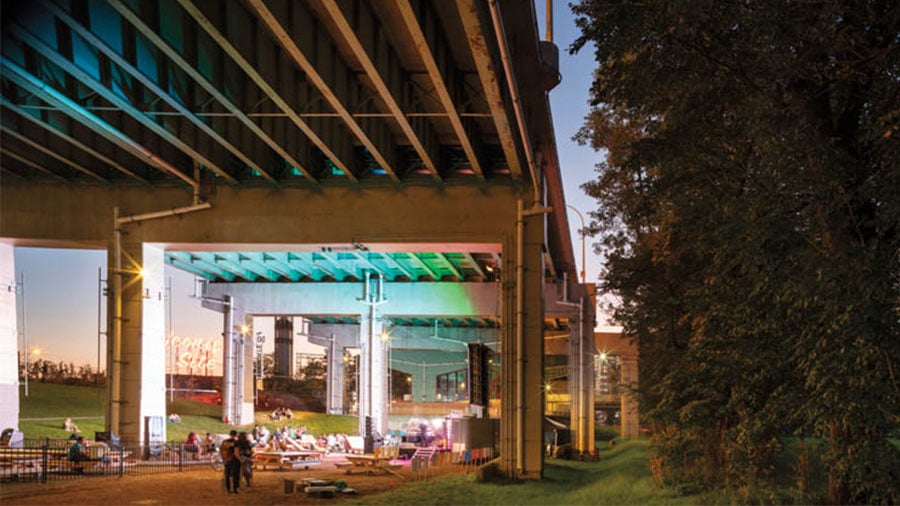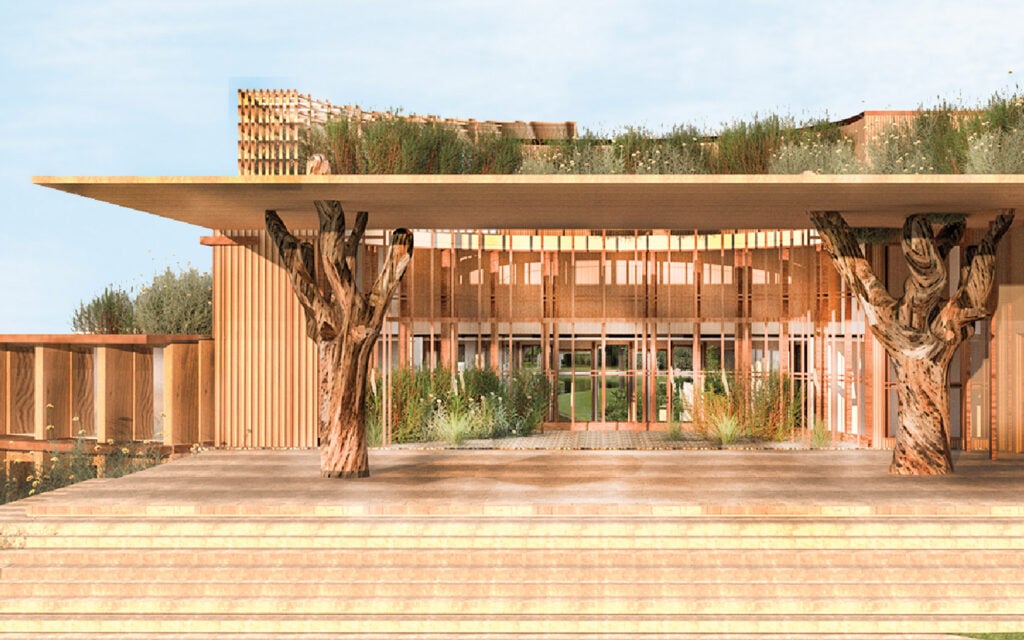
August 22, 2022
SCHOOLED: What is Infrastructure?
The term infrastructure usually describes a network of streets, bridges, highways, and railroads as well as systems tied to public works such as sewer and stormwater management that are largely underfoot. Human populations rely on these vast complex systems to stay physically connected to important services and each other.
But a quick scan of Merriam Webster’s three flexible definitions also reveals that the ways English speakers use the word (borrowed originally from the French in the late 1800s) continues to evolve more than a century later.
Projects
At Toronto’s Bentway, Lighting Is a Base Layer for Artistic Intervention
PUBLIC WORK and Tillett Lighting Design Associates conceived the strategy with hyper-flexibility in mind.
Projects
This Bridge in Providence Was Designed as Public Space
A part of Rhode Island’s extensive Iway project, the infrastructure supports a pedestrian pathway, gardens, and occupiable spaces.
Viewpoints
Can “Oyster-Tecture” Actually Save Our Cities?
Oyster-tecture is one of several emerging practices that are shifting the way we think about infrastructure. The old ideals behind public works projects were focused only on enhancing people’s lives. Oyster-tecture pro…
Initially, infrastructure described the foundations or substructures of a building or railroad. And architecturally speaking, especially in urban settings, it generally refers to manmade structures underground. So tunnels, pipes, ditches, and canals that make up a typical water-management system all qualify as infrastructure. In rural areas, the word also correctly describes even small-scale, individual waste-water management systems that treat and dispose of wastewater from one or a few houses and businesses that are not connected to the public network.
Because the nation’s power grid is similarly vast, electrical lines and plants that are above ground should be considered infrastructure.
Now, because of the new Bipartisan Infrastructure Law, the term can also cover systemic access to broadband Internet.
Would you like to comment on this article? Send your thoughts to: [email protected]
Related
Profiles
WAI Architecture Think Tank Approaches Practice as Pedagogy
Nathalie Frankowski and Cruz García use their practice to help dismantle oppressive systems, forge resistance spaces, and reimagine collective futures.
Products
Functional Beauty: Hardware That Does More Than Look Good
Discover new standout pieces that marry form and function, offering both visual appeal and everyday practicality.
Profiles
The Next Generation Is Designing With Nature in Mind
Three METROPOLIS Future100 creators are looking to the world around them for inspiration.








